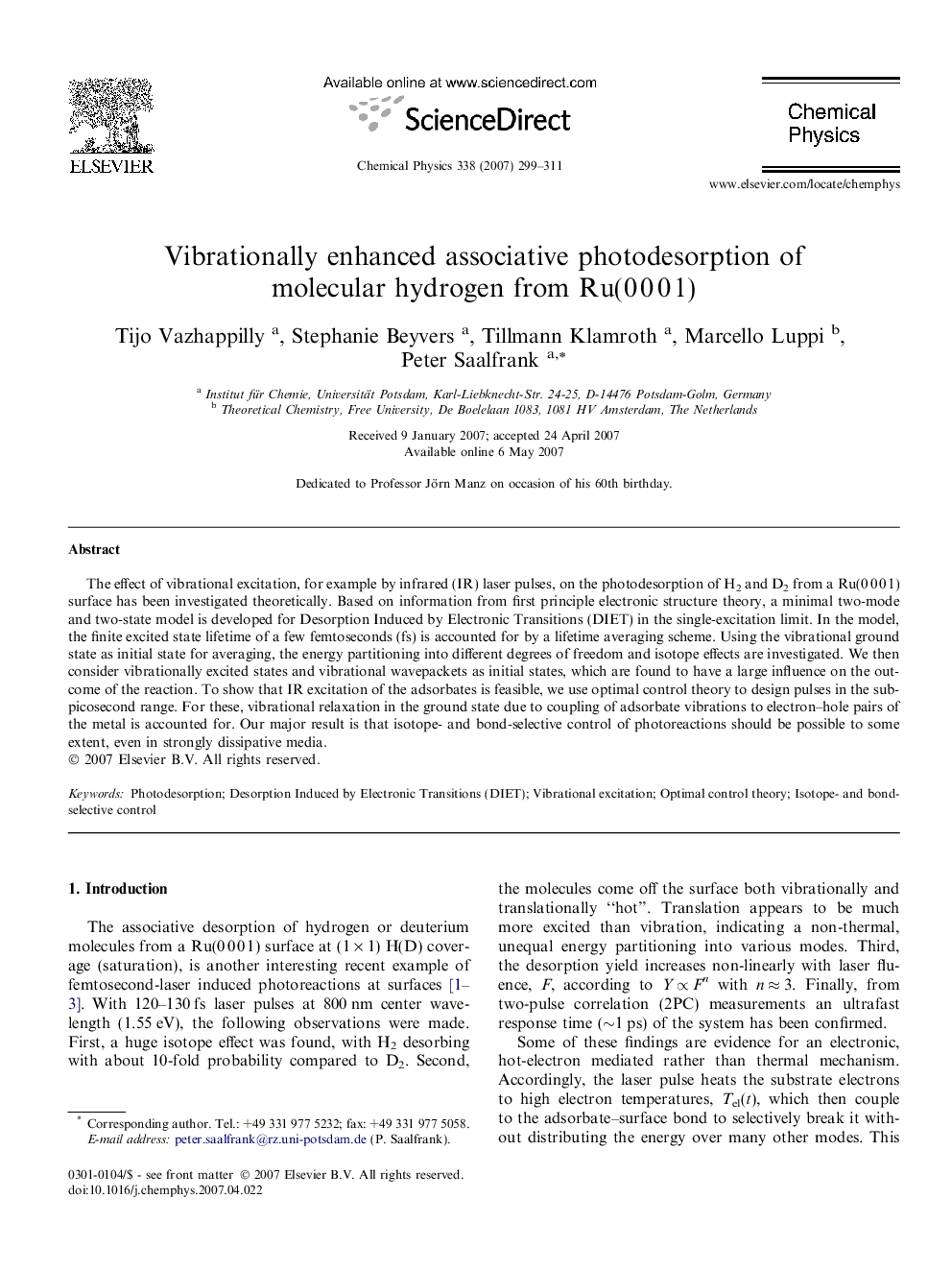| Article ID | Journal | Published Year | Pages | File Type |
|---|---|---|---|---|
| 5376644 | Chemical Physics | 2007 | 13 Pages |
Abstract
The effect of vibrational excitation, for example by infrared (IR) laser pulses, on the photodesorption of H2 and D2 from a Ru(0Â 0Â 0Â 1) surface has been investigated theoretically. Based on information from first principle electronic structure theory, a minimal two-mode and two-state model is developed for Desorption Induced by Electronic Transitions (DIET) in the single-excitation limit. In the model, the finite excited state lifetime of a few femtoseconds (fs) is accounted for by a lifetime averaging scheme. Using the vibrational ground state as initial state for averaging, the energy partitioning into different degrees of freedom and isotope effects are investigated. We then consider vibrationally excited states and vibrational wavepackets as initial states, which are found to have a large influence on the outcome of the reaction. To show that IR excitation of the adsorbates is feasible, we use optimal control theory to design pulses in the sub-picosecond range. For these, vibrational relaxation in the ground state due to coupling of adsorbate vibrations to electron-hole pairs of the metal is accounted for. Our major result is that isotope- and bond-selective control of photoreactions should be possible to some extent, even in strongly dissipative media.
Keywords
Related Topics
Physical Sciences and Engineering
Chemistry
Physical and Theoretical Chemistry
Authors
Tijo Vazhappilly, Stephanie Beyvers, Tillmann Klamroth, Marcello Luppi, Peter Saalfrank,
